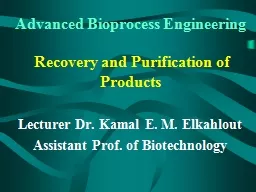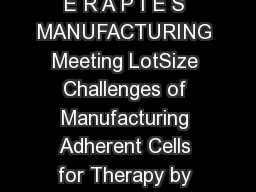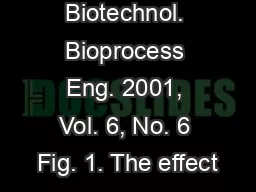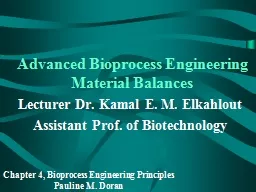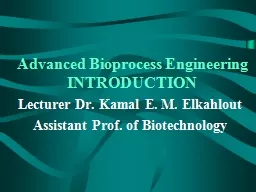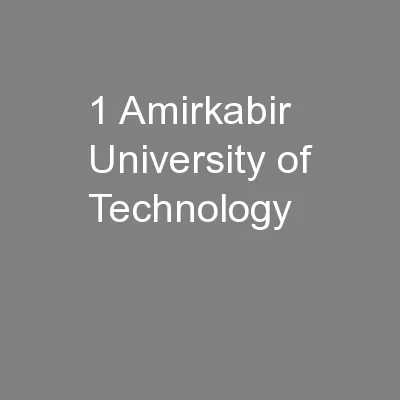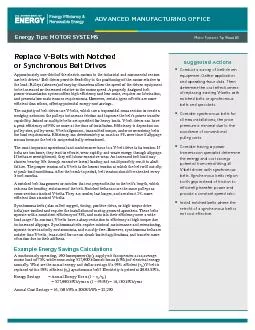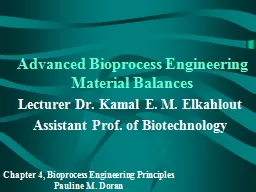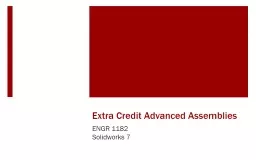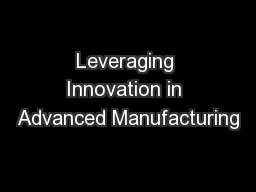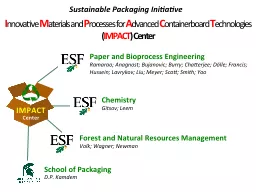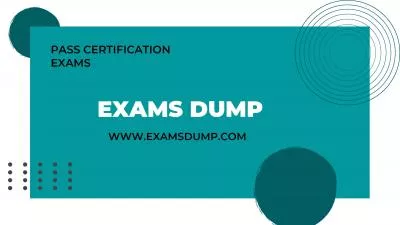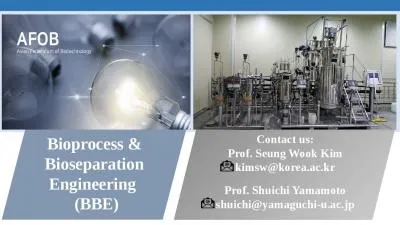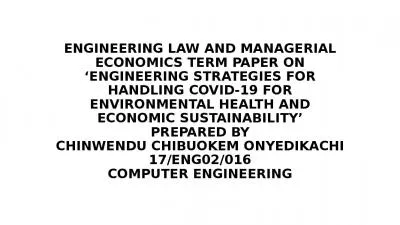PPT-Advanced Bioprocess Engineering
Author : liane-varnes | Published Date : 2018-01-30
Recovery and Purification of Products Lecturer Dr Kamal E M Elkahlout Assistant P rof of Biotechnology General Approach Separation of insoluble products or
Presentation Embed Code
Download Presentation
Download Presentation The PPT/PDF document "Advanced Bioprocess Engineering" is the property of its rightful owner. Permission is granted to download and print the materials on this website for personal, non-commercial use only, and to display it on your personal computer provided you do not modify the materials and that you retain all copyright notices contained in the materials. By downloading content from our website, you accept the terms of this agreement.
Advanced Bioprocess Engineering: Transcript
Download Rules Of Document
"Advanced Bioprocess Engineering"The content belongs to its owner. You may download and print it for personal use, without modification, and keep all copyright notices. By downloading, you agree to these terms.
Related Documents

